72 have author last names that start with W have author last names that start with W

From Pegasus to Black Beauty, horses have held a unique place in human society and imagination. Elaine Walker tackles the long and multifaceted history of a creature valued for both beauty and usefulness.
Spanning the world from the wild steppes of Mongolia to the American plains, Horse chronicles the rich and complex natural history of the animal, from wild feral horses to the domesticated species that once played a central role in daily life as a means of transportation, an instrument of war, and a source of labour. Elaine Walker charts how the long-standing connection between people and horses is reflected in cultures around the world and the implications for both human and animal of such close interaction. She also traces the centrality of the horse in art, entertainment and literature, from the rich global traditions of horse-racing and equestrianism to literary classics such as Follyfoot. Ultimately, Walker contends, the continuing role of the horse in the modern world reveals telling changes in human society.

Whether portrayed as an unrepentant thief, a shape-shifter, or an outlaw, the fox’s primary purpose in literature, Wallen demonstrates, is to disrupt human order. In Chinese folklore, for example, the fox becomes a cunning mistress, luring human men away from their wives. Wallen also discusses the numerous ways in which fox-related terms have entered the vernacular, from “foxy lady” to the process of “foxing,” or souring beer during fermentation. Thoughtful and illuminating, Fox shows that this lovely creature is as beguiling as it is controversial.
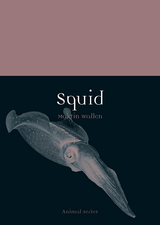
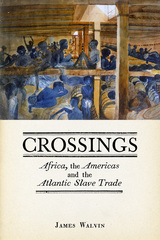

Live Wires explores how five key electronic technologies—the tape recorder, circuit, computer, microphone, and turntable—revolutionized musical thought. Featuring the work of major figures in electronic music—including everyone from Schaeffer, Varèse, Xenakis, Babbitt, and Oliveros to Eno, Keith Emerson, Grandmaster Flash, Juan Atkins, and Holly Herndon—Live Wires is an arresting discussion of the powerful musical ideas that are being recycled, rethought, and remixed by the most interesting electronic composers and musicians today.

The Political Landscape is underpinned with a fascinating array of examples and illustrations, many of which will be new even to experts in the art of landscape and related disciplines.

The author explains how the charms of Bangkok and its people outweigh the disadvantages of pollution, traffic and stifling heat. He also introduces celebrities, such as the early kings of Thailand’s present dynasty and Anna Leonowens, heroine of The King and I, as well as Jim Thompson, the US-born silk entrepreneur and art collector who mysteriously vanished in the jungles of Malaysia.
Bangkok provides a much needed history of the city, but is also imbued with the warmth of Warren’s love affair with its frenetic way of life.
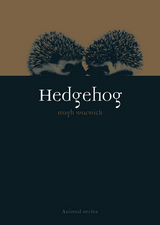
Following the hedgehog as it spreads through Europe and Asia to the foot of Africa, Hugh Warwick describes its evolution, behavior, habitat, and diet, as well as its current endangered status. He also looks at the animal’s appeal, accessibility, and status as a pet in many countries, considering its appearance in advertising, films, children’s books, and games. Casting new light on the ancestors of Sonic and Mrs. Tiggy-Winkle, Hedgehog is a fascinating look at these prickly, admirable animals.

Drawing on the most recent work of historians, ecologist geographers, botanists, and forestry professionals, Charles Watkins reveals how established ideas about trees—such as the spread of continuous dense forests across the whole of Europe after the Ice Age—have been questioned and even overturned by archaeological and historical research. He shows how concern over woodland loss in Europe is not well founded—especially while tropical forests elsewhere continue to be cleared—and he unpicks the variety of values and meanings different societies have ascribed to the arboreal. Altogether, he provides a comprehensive, interdisciplinary overview of humankind’s interaction with this abused but valuable resource.
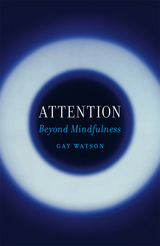
If there is one thing we are short on these days, it’s attention. Attention is central to everything we do and think, yet it is mostly an intangible force, an invisible thing that connects us as subjects with the world around us. We pay attention to this or that, let our attention wander—we even stand at attention from time to time—yet rarely do we attend to attention itself. In this book, Gay Watson does just that, musing on attention as one of our most human impulses.
As Watson shows, the way we think about attention is usually through its instrumentality, by what can be achieved if we give something enough of it—say, a crisply written report, a newly built bookcase, or even a satisfied child who has yearned for engagement. Yet in losing ourselves to the objects of our fixation, we often neglect the process of attention itself. Exploring everything from attention’s effects on our neurons to attention deficit disorder, from the mindfulness movement to the relationship between attention and creativity, Watson examines attention in action through many disciplines and ways of life. Along the way, she offers interviews with an astonishing cast of creative people—from composers to poets to artists to psychologists—including John Luther Adams, Stephen Batchelor, Sue Blackmore, Guy Claxton, Edmund de Waal, Rick Hanson, Jane Hirshfield, Wayne Macgregor, Iain McGilchrist, Garry Fabian Miller, Alice and Peter Oswald, Ruth Ozeki, and James Turrell.
A valuable and timely account of something central to our lives yet all too often neglected, this book will appeal to anyone who has felt their attention under threat in the clamors of modern life.
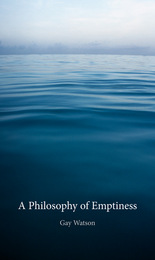
Digging through early and non-Western philosophy, Gay Watson uncovers a rich history of emptiness. She travels from Buddhism, Taoism, and religious mysticism to the contemporary world of philosophy, science, and art practice. Though most Western philosophies are concerned with substance and foundation, she finds that the twentieth century has seen a resurgence of emptiness and offers reasons why such an apparently unappealing concept has attracted modern musicians, artists, and scientists, as well as preeminent thinkers throughout the ages. Probing the idea of how a life without foundation might be lived—and why a person might choose this path—A Philosophy of Emptiness links these concepts to contemporary ideas of meditation and the mind, presenting a rich and intriguing take on the concept of emptiness and the history of thought.

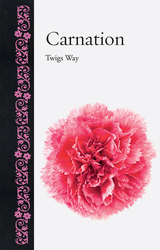
The author traces the trials and tribulations of early breeders—compelled by florists’ fascinations for the striped and spotted—which led to delightfully colored (and delightfully named) varieties such as Lustie Gallant and Bleeding Swain. She looks at the symbolism of the red and white—and even green—carnations made famous by Oscar Wilde, and glides through many of the rooms in literature and history that we have filled with the carnation’s glorious scent. Travelling from Europe to China, Way explores how carnations have been used by herbalists the world over as a treatment for ailments to both mind and body, and she looks at the many paintings that have attempted to capture their unique complexities. Lavishly illustrated and full of unexpected delights, this book will—like the carnation itself—charm the mind and invigorate the senses.


As Weinraub shows, salads started as a simple assemblage of wild plants gathered from the hillsides, a necessary source of calories and a pleasant contrast to the gamey meats that usually comprised a meal. It was only in later centuries that their nutritional value became known, and they assumed their place as the quintessential health food. Over that time, we learned to lavish them with oils, vinegars, juices, creams, cheeses, seeds, nuts, fruits, and proteins, and we learned to give them special names: chef, cobb, and caesar, not to mention niçoise, panzanella, and tabbouleh. Appetizingly written and freshly illustrated, this book will make a perfect accompaniment to any meal—or a main course in itself.
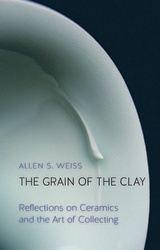
Weiss examines the vast stylistic range of ceramics and investigates both the theoretical and personal reasons for viewing, using, and collecting them. Relating ceramics to other arts and practices—especially those surrounding food—he explores their different uses such as in the celebrated tea ceremony of Japan. Most notably, he considers how works previously viewed as crafts have found their rightful way into museums, as well as how this new-found engagement with finely wrought natural materials may foster an increased ecological sensitivity. The result is a wide-ranging and sensitive look at a crucial part of our material culture.


Be it soft-serve, gelato, frozen custard, Indian kulfi or Israeli glida, some form of cold, sweet ice cream treat can found throughout the world in restaurants and home freezers. Though ice cream was once considered a food for the elite, it has evolved into one of the most successful mass-market products ever developed.
In Ice Cream, food writer Laura B. Weiss takes the reader on a vibrant trip through the history of ice cream from ancient China to modern-day Tokyo in order to tell the lively story of how this delicious indulgence became a global sensation. Weiss tells of donkeys wooed with ice cream cones, Good Humor-loving World War II-era German diplomats, and sundaes with names such as “Over the Top” and “George Washington.” Her account is populated with Chinese emperors, English kings, former slaves, women inventors, shrewd entrepreneurs, Italian immigrant hokey-pokey ice cream vendors, and gourmand American First Ladies. Today American brands dominate the world ice cream market, but vibrant dessert cultures like Italy’s continue to thrive, and new ones, like Japan’s, flourish through unique variations.
Weiss connects this much-loved food with its place in history, making this a book sure to be enjoyed by all who are beckoned by the siren song of the ice cream truck.

Covering an immense geographical range, Michael Welland wanders from the Sahara to the Atacama, depicting the often bizarre adaptations of plants and animals to these hostile environments. He also looks at these seemingly infertile landscapes in the context of their place in history—as the birthplaces not only of critical evolutionary adaptations, civilizations, and social progress, but also of ideologies. Telling the stories of the diverse peoples who call the desert home, he describes how people have survived there, their contributions to agricultural development, and their emphasis on water and its scarcity. He also delves into the allure of deserts and how they have been used in literature and film and their influence on fashion, art, and architecture. As Welland reveals, deserts may be difficult to define, but they play an active role in the evolution of our global climate and society at large, and their future is of the utmost importance. Entertaining, informative, and surprising, The Desert is an intriguing new look at these seemingly harsh and inhospitable landscapes.
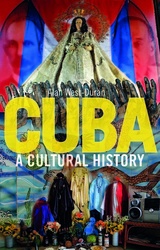
Cuba: A Cultural History tells the story of Cuba’s history through an exploration of its rich and vibrant culture. Rather than offer a timeline of Cuban history or a traditional genre-by-genre history of Cuban culture, Alan West-Durán invites readers to enter Cuban history from the perspective of the island’s uniquely creative cultural forms. He traces the restless island as it ebbs and flows with the power, beauty, and longings of its culture and history.
In a world where revolutionary socialism is an almost quaint reminder of the decades-old Cold War, the island nation remains one of the few on the planet guided by a Communist party, still committed to fighting imperialism, opposed to the injustices of globalization, and wedded to the dream of one day building a classless society, albeit in a distant future. But as this book shows, Cuba is more than a struggling socialist country—it is a nation with a complex and turbulent history and a rich and varied culture.
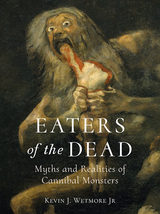
Every culture has monsters that eat us, and every culture repels in horror when we eat ourselves. From Grendel to medieval Scottish cannibal Sawney Bean, and from the Ghuls of ancient Persia to The Texas Chainsaw Massacre, tales of being consumed are both universal and universally terrifying. In this book, Kevin J. Wetmore Jr. explores the full range of monsters that eat the dead: ghouls, cannibals, wendigos, and other beings that feast on human flesh. Moving from myth through history to contemporary popular culture, Wetmore considers everything from ancient Greek myths of feeding humans to the gods, through sky burial in Tibet and Zoroastrianism, to actual cases of cannibalism in modern societies. By examining these seemingly inhuman acts, Eaters of the Dead reveals that those who consume corpses can teach us a great deal about human nature—and our deepest human fears.

This is the story of a group of women whose experiments in art and life set the tone for the rise of New York as the twentieth-century capital of modern culture. Across the 1910s and ’20s, through provocative creative acts, shocking fashion, political activism, and dynamic social networks, these women reimagined modern life and fought for the chance to realize their visions. Taking the reader on a journey through the city’s salons and bohemian hangouts, Radicals and Rogues celebrates the tastemakers, collectors, curators, artists, and poets at the forefront of the early avant-garde scene. Focusing on these trailblazers at the center of artistic innovation—including Beatrice Wood, Mina Loy, the Stettheimer sisters, Clara Tice, the Baroness Elsa von Freytag Loringhoven, Gertrude Vanderbilt Whitney, Marguerite Zorach, and Louise Arensberg—Lottie Whalen offers a lively new history of remarkable women in early twentieth-century New York City.

Almost all of Rimbaud’s poems were written between the ages of fifteen and twenty. Against the backdrop of the crumbling Second Empire and the tumultuous Paris Commune, he took centuries-old traditions of French versification and picked them apart with an unmatched knowledge of how they fitted together. Combining sensuality with the pastoral, parody, political satire, fable, eroticism, and mystery, his poems range from traditional verse forms to prose-poetry to the first two free-verse poems written in French. By situating Rimbaud’s later writing in Africa as part of a continuum that spanned his entire life, Whidden offers a corrective to the traditional split between Rimbaud’s life as a poet and his life afterwards. A remarkable portrait of the original damned poet, Arthur Rimbaud reinvents a figure who continues to captivate readers, artists, and writers across the world.

“Brilliantly researched and written.”—Jon Snow, Channel 4 News
“A comprehensive and intelligible account of the elusive world of hacking and cybercrime over the last two decades. . . . Lively, insightful, and, often, alarming.”—Ewen MacAskill, Guardian
On May 4, 2000, an email that read “kindly check the attached LOVELETTER” was sent from a computer in the Philippines. Attached was a virus, the Love Bug, and within days it had been circulated across the globe, paralyzing banks, broadcasters, and businesses in its wake, and extending as far as the UK Parliament and, reportedly, the Pentagon. The outbreak presaged a new era of online mayhem: the age of Crime Dot Com. In this book, investigative journalist Geoff White charts the astonishing development of hacking, from its conception in the United States’ hippy tech community in the 1970s, through its childhood among the ruins of the Eastern Bloc, to its coming of age as one of the most dangerous and pervasive threats to our connected world. He takes us inside the workings of real-life cybercrimes, drawing on interviews with those behind the most devastating hacks and revealing how the tactics employed by high-tech crooks to make millions are being harnessed by nation states to target voters, cripple power networks, and even prepare for cyber-war. From Anonymous to the Dark Web, Ashley Madison to election rigging, Crime Dot Com is a thrilling, dizzying, and terrifying account of hacking, past and present, what the future has in store, and how we might protect ourselves from it.
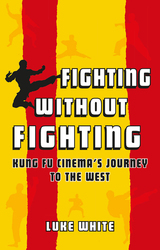
In the spring and summer of 1973, a wave of martial arts movies from Hong Kong—epitomized by Bruce Lee’s Enter the Dragon—smashed box-office records for foreign-language films in America and ignited a “kung fu craze” that swept the world. Fighting without Fighting explores this dramatic phenomenon, and it argues that, more than just a cinematic fad, the West’s sudden fascination with—and moral panic about—the Asian fighting arts left lasting legacies still present today.
The book traces the background of the craze in the longer development of Hong Kong’s martial arts cinema. It discusses the key films in detail, as well as their popular reception and the debates they ignited, where kung fu challenged Western identities and raised anxieties about violence, both on and off-screen. And it examines the proliferation of ideas and images from these films in fields as diverse as popular music, superhero franchises, children’s cartoons, and contemporary art. Illuminating and accessible, Fighting without Fighting draws a vivid bridge between East and West.

On January 3, 1911, police discovered Latvian revolutionaries on the lam in London’s East End. A six-hour gunfight ensued until fire consumed the building where the radicals had taken refuge. When a not-yet-prime-minister Winston Churchill arrived at the scene, he ordered officials to let the fire run its course. At least two people burned to death in the blaze, but the Latvian ringleader, Peter the Painter, remained at large. Known as the Siege of Sidney Street, the event was a nationwide sensation and ignited fierce debates about immigration, extremism, and law enforcement. This book unravels the full story of the siege, the Latvian expatriates, and London’s vibrant anarchist movement in the early twentieth century.

Design for Society is not an anti-design book; rather, it is an anti-consumerist-design book, in that it reveals what most people would agree are the socially and ecologically unsound values and unsatisfactory implications on which the system of consumerist design is constructed. In so doing, it prepares the ground for a more responsible and just type of design.


In recent years, as the author points out, there has been increasing interest in, and concern for, many aspects of landscape within British, European and wider contexts. This has included the study of the history, development and changes in our perception of landscape, as well as research into the links between past landscapes and political ideologies, economic and social structures, cartography, art and literature.
There is also considerable concern at present with the need to evaluate and classify historic landscapes, and to develop policies for their conservation and management in relation to their scenic, heritage and recreational value. This is manifest not only in the designation of particularly valued areas with enhanced protection from planning developments, such as national parks and world heritage sites, but in the countryside more generally. Further, Ian D. Whyte argues, changes in European Union policies relating to agriculture, with a greater concern for the protection and sustainable management of rural landscapes, are likely to be of major importance in relation to the themes of continuity and change in the landscapes of Britain and Europe.

After discussing Kurosawa’s childhood in Japan, Wild explores his years as an assistant director at a new film studio and his early films during and after World War II before he won international acclaim with Rashomon. While surveying Kurosawa’s impressive career, Wild also examines the myriad criticisms the director faced both within his own country and abroad—he was too influenced by Western cinema; not authentically Japanese; and he was too sentimental, naïve, arrogant, or out of touch. By placing Kurosawa and his films in the context of his times, Wild helps us to understand the director and the reproaches against him. Cogent and concise, Akira Kurosawa will be essential reading for anyone interested in the work of this masterful filmmaker.

Kelley Wilder draws upon her extensive background in alternative process photography, museum practice, art history, and history of science to produce a wide-ranging and illuminating investigation into the intersection of photography and science. Photography and Science describes how photography first established its legitimacy through its close association with key scientific ideas and practices, such as objectivity, observation, archiving, and experimentation. Wilder then charts how photography returned the favor by serving as a powerful influence in various scientific disciplines, such as biology and astronomy. The book digs into the controversial debates over photography’s “success” in the sciences, its use in practical fields such as medical imaging and x-raying, and the complicated relationship between scientific theory and art practice.
Augmenting this fascinating study are eighty photographs of scientific subjects and experiments, many of which are published here for the first time. A thought-provoking, broad-based examination, Photography and Science will be an essential addition to the bookshelves of scientists, photographers, and art historians alike.

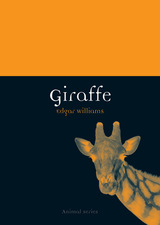
Their extraordinary long necks, distinctive camouflage, graceful movements, and friendly nature have made giraffes one of the most fascinating and beloved animals on the planet. But while giraffes once roamed the Great Plains of Africa in huge herds, their numbers have greatly diminished, and they are now entirely dependent on humanity for their survival. In Giraffe, Edgar Williams explores not only the biology of the tallest animals on earth, but also their impact on human history—including in ancient Egypt, where giraffes were kept as exotic pets; the Middle Ages, when giraffes were considered mythical beasts as improbable and mysterious as the dragon; and the Victorian era, in which giraffe hunting was considered an exhilarating sport.
Giraffe is the first book to provide a comprehensive, twenty-first-century view of the giraffe in art, literature, film, and popular culture, as well as its natural history from prehistory to modern times. With new insights into the giraffe’s genetics and evolution, this book will appeal to those interested in the giraffe’s unique biology and to anyone who admires the majestic giraffe.

As Williams recounts, while Hippos are only found in Africa today, they actually originated in Asia. They are closer relatives to whales than to pigs or horses, as previously thought. And until the last Ice Age, you could find them as far north as Europe. Today the common hippo is confined to south, central, and east Africa, and its mysterious cousin, the Pygmy Hippo, is only found in the forests of Sierra Leone. From these natural confines, Williams explores how hippos have lived in much wider regions of the human imagination, from the hippo deity Taweret in Ancient Egypt to Obaysch, the first living hippo exhibited in the London Zoo in the nineteenth century, whom Charles Dickens called our “illustrious stranger.” A fascinating history of the hippo in natural and human history, this book also serves as a call for conservation efforts to protect this vulnerable animal.
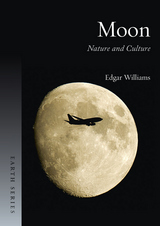
Edgar Williams explores the interdependence of the Earth and the moon, not only the possibility that life on Earth would not be viable without the moon, but also the way it has embedded itself in culture. In addition to delving into roles the moon has played in literature from science fiction and comics to poetry, he examines how Elizabeth I was worshipped as the moon goddess Diana, the moon’s place in folklore and astrology, and humanity’s long-standing dream of inhabiting its surface. Filled with entertaining anecdotes, this book is the kind of succinct, witty, and informative look at everything lunar that only comes around once in a blue moon.


Williams visits countless tequila producers, distributors, and connoisseurs to tell the story of how tequila started in the agave lands of Mexico, became an icon of youthful inebriation, and developed, today, into a truly artisanal product drawing the most discerning drinkers. Peppered throughout are illustrations that capture tequila’s Mexican heritage and commercial image. Including recipes for tequila-based cocktails, as well as advice on the buying, storing, tasting, and serving of tequila, this history will delight any beverage aficionado or anyone interested in the history of Mexico and its culinary riches.

Doctor, militant, essayist, ambassador, teacher, journalist, pan-Africanist, Frantz Fanon sought to decolonize mid-twentieth-century culture as he embodied a new kind of intellectual. Born in colonial Martinique, he fought for France during World War II but later renounced his citizenship and fought in the Algerian War of Independence. This book emphasizes Fanon’s gift for self-invention and performance as it follows his short but extraordinary life and explores how his pioneering work in psychiatry influenced his revolutionary philosophy.

Williams’s biographical investigation of this poet, dramatist, novelist, designer, and filmmaker centers around Cocteau’s constant self-questioning and how it permeated his work. From Cocteau’s work in fashion and photography to his formal experimentation to his extensive collaborations with male friends and lovers, the book charts the complex and unpredictable evolution of his work and aesthetic. Williams argues that Cocteau’s body of work is best viewed as an ethical, erotic project of aesthetics that carries important ramifications for our contemporary understanding of being and subjectivity.
An engaging and wholly accessible account, Jean Cocteau is essential reading for all those fascinated by the man and his unforgettable films.

Williams connects the plays for which Havel is best known to his earlier poetry as well as to his development as a writer of profound insight on the arts, his country’s social and political turmoil, and the modern condition at large. He also contextualizes Havel’s oeuvre within his dramatic private life and his ambivalence about being the scion of a patriotic and cosmopolitan Prague family. Reading Havel’s works in Czech alongside his voluminous correspondence, Williams produces a full, rounded picture of a figure of extraordinary artistic and political courage beset with inner paradoxes.
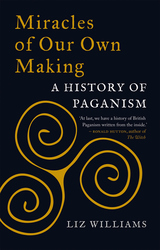
“An absolute must for anyone interested in the development of paganism in the modern world. I cannot recommend this book enough.”—Janet Farrar, coauthor of A Witches’ Bible
“At last, we have a history of British Paganism written from the inside, by somebody who not only has a good knowledge of the sources, but explicitly understands how Pagans and magicians think.”—Ronald Hutton, author of The Triumph of the Moon and The Witch
What do we mean by “paganism”—druids, witches, and occult rituals? Healing charms and forbidden knowledge? Miracles of Our Own Making is a historical overview of pagan magic in the British Isles, from the ancient peoples of Britain to the rich and cosmopolitan landscape of contemporary paganism. Exploring the beliefs of the druids, Anglo-Saxons, and Vikings, as well as Elizabethan Court alchemy and witch trials, we encounter grimoires, ceremonial magic, and the Romantic revival of arcane deities. The influential and well-known—the Golden Dawn, Wicca, and figures such as Aleister Crowley—are considered alongside the everyday “cunning folk” who formed the magical fabric of previous centuries. Ranging widely across literature, art, science, and beyond, Liz Williams debunks many of the prevailing myths surrounding magical practice, past and present, while offering a rigorously researched and highly accessible account of what it means to be a pagan today.

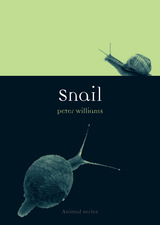
So attached was the author Patricia Highsmith to snails that they became her constant travelling companions. Often hidden in a large handbag, they provided her with comfort and companionship in what she perceived to be a hostile world. Theirs was perhaps an unusual relationship; for most of us the tentacled snail with his sticky trail might be a delicious treat served up in garlic butter but certainly not an affectionate pet. As well, for many a gardener, opinions on the snail and slug (which is a just a snail without a shell) have been shaped by the harm they inflict on vegetable plants and seedlings. With Snail, Peter Williams wishes to change our perspectives on this little but much-maligned creature.
Beginning with an overview of our relationship with snails, slugs, and sea snails,
Williams moves on to examine snail evolution; snail behavior and habitat; snails as food, medicine, and the source of useful chemicals and dyes; snail shells as collectible objects; and snails in literature, art, and popular culture. Finally, in this appreciative account of the snail, Williams offers a plea for a reconsideration of the snail as a dignified, ancient creature that deserves our respect.
Containing beautiful illustrations and written in an approachable, informal style, Snail will help readers get beyond the shell and slime to discover the fascinating creature inside.

Spanning from 1945 through today, the book examines Brazilian architecture beyond the works of renowned architects such as Oscar Niemeyer and the “Carioca” architects of Rio de Janeiro. Williams investigates issues such as the use of historic architecture, the importance of leisure and luxury, the role of the favela as a backdrop and inspiration for development, and the rapid growth of cities. From the designated world heritage site of Brasilia—a capital city that was planned from the ground up—to the installation work of artists such as Hélio Oiticica, Brazil delves into the origins and far-reaching influence of Brazil’s architectural modernism.
At a moment when Latin America is of increasing importance in global business and culture, Brazilwill be an essential read for all scholars of architecture and Latin American history.


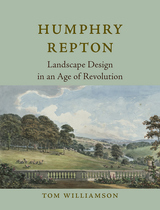
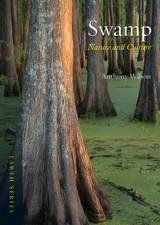
Covering not only swamps and bogs but also marshes and wetlands, Swamp ventures into the cultural and ecological histories of these mysterious, mythologized, and misunderstood landscapes. Anthony Wilson takes readers into swamps across the globe, from the freshwater marshes of Botswana’s tremendous Okavango delta, to the notable swamps between the Tigris and Euphrates rivers, to the peat bogs in Russia, the British Isles, and Scandinavia, which have been used as energy sources for centuries. It explores ideas and representations of wetlands across centuries, cultures, and continents, considering legend and folklore, mythology, literature, film, and natural and cultural history. As it plumbs the murky depths of swamps from the distant past to an uncertain future, Swamps provides an engaging, accessible, informative, and lavishly illustrated journey into these fascinating landscapes.

The humble peanut butter and jelly or bologna and cheese or corned beef on rye—no matter your cooking expertise, chances are you’ve made and eaten countless sandwiches in your lifetime. It’s quick, it’s simple, and it’s open to infinite variety and inventiveness. If there’s something bread- or bun-like in your cupboard, there is a sandwich waiting to happen.
Though sandwiches are a near-universal food, their origin can be traced to a very precise historical figure: John Montagu, the Fourth Earl of Sandwich, who, sometime before 1762 being too busy to stop for dinner, asked for some cold beef to be brought to him between two slices of bread. In Sandwich,award-winning food writer Bee Wilson unravels the mystery of how the Earl invented this most elementary but delicious way of eating. Wilson explores what sandwiches might have been like before the eighteenth century, why the name sandwich stuck, and how the Earl’s invention took off so quickly around the globe.
Wilson brings together a wealth of material to trace how the sandwich has evolved, looking at sandwiches around the world, from the decadent meatball hoagie to the dainty cucumber tea sandwich. Loved the world over, this popular food has surprisingly never before been the subject of a book-length history until now.

Pain and Retribution explores prisons as an institution and examines how they are designed, organized, and managed. Wilson reveals that prisons have to satisfy the demands of three interested parties: the public, from politicians and media commentators to everyday citizens; the prison staff; and the prisoners themselves. He shows how prevailing concerns and issues of the times allow one faction or another to have more power at varying points in history, and he considers how prisons are unable to satisfy all three at the same time—leading to the system being seen as a failure, despite rising numbers of prisoners and growing funds invested in keeping them incarcerated. With intriguing comparisons between the prisons of New York City and Britain and searching questions about the purposes of the current penal system, Pain and Retribution provides unparalleled access to prison landings, staffs, and the people behind the locked doors.

The robin is a small bird with a distinctive ruddy breast, at once a British national treasure and a bird with a global reputation. In this superbly illustrated account, Helen F. Wilson looks at many aspects of the cherished robin, from its status as a harbinger of seasonal change and, in the United Kingdom, an icon of Christmas, to its place in fairy tales, environmental campaigns, and scientific discovery. In moving between cultural and natural histories, Robin asks wide-ranging questions, such as how did the robin’s name travel the world? Why is the robin so melancholy? Who was Cock Robin? And how has the history of the color red shaped the robin’s ambivalent associations and unusual origin stories?

Wilson offers a history of Buenos Aires’s beginnings as a Spanish colony in the sixteenth century, describing how it evolved from a port city for European trade to a booming, multicultural regional capital that became the leading destination for European immigrants. He examines the many swings between authoritarian and democratic governments the city has experienced during its history and sorts out the urban myths from the real story of the monuments, buildings, and people of Buenos Aires. The book also includes essays on present-day Buenos Aires—its parks, cemeteries, museums, and bookshops—to reveal what makes the city tick. Illustrated throughout with contemporary photos and compelling historical images, Buenos Aires provides useful references for travelers looking for restaurant, hotel, and itinerary ideas.
One of the first titles in Reaktion’s new CityScopes series, this social and urban history is an authoritative introduction and intimate guide to this vibrant, alluring city, past and present.

“Through the years, a man peoples a space with images of provinces, kingdoms, mountains, bays, ships, islands, fishes, rooms, tools, stars, horses and people. Shortly before his death, he discovers that the patient labyrinth of lines traces the image of his own face.”
These words, inseparably marrying Jorge Luis Borges's life and work, encapsulate how he interwove the two throughout his legendary career. But the Borges of popular imagination is the blind, lauded librarian and man of letters; few biographers have explored his tumultuous early life in the streets and cafes of Buenos Aires, a young man searching for his path in the world. In Jorge Luis Borges, Jason Wilson uncovers the young poet who wrote, loved, and lost with adventurous passion, and he considers the later work and life of the writer who claimed he never created a character other than himself. As Borges declared, “It’s always me, subtly disguised.”
Born in Buenos Aires in 1899, Borges was a voracious reader from childhood, perhaps in part because he knew he lived under an inescapable sentence of adult-onset blindness inherited from his father. Wilson chronicles Borges’s life as he raced against time and his fated blindness, charting the literary friendships, love affairs, and polemical writings that formed the foundation of his youth. Illuminating the connections running between the biography and fictions of Borges, Wilson traces the outline of this self-effacing literary figure.
Though in his later writings Borges would subjugate emotion to the wild play of ideas, this bracing book reminds us that his works always recreated his life in subtle and delicate ways. Restoring Borges to his Argentine roots, Jorge Luis Borges will be an invaluable resource for all those who treasure this modern master.

Pierrot, Little Bo Peep, cowboy: these characters and many more form part of this colorful story of dressing up, from the accession of Queen Victoria to the coronation of Queen Elizabeth II. During this time, fancy dress became a regular part of people’s social lives, and the craze for it spread across Britain and the Empire, reaching every level of society. Spectacular and witty costumes appeared at suburban street carnivals, victory celebrations, fire festivals, missionary bazaars, and the extravagant balls of the wealthy. From the Victorian middle classes performing “living statues” to squads of Shetland men donning traditional fancy dress and setting fire to a Viking ship at the annual Up Helly Aa celebration, this lavishly illustrated book provides a unique view into the quirky, wonderful world of fancy dress.


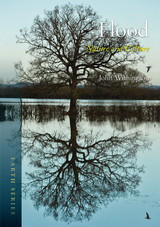
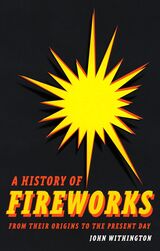
This book illuminates the glittering history of fireworks, from their mysterious beginnings to the dazzling big-budget displays of today. It describes how they enthralled the world’s royal courts and became a sensation across the British Empire. There are stories of innovations like “living fireworks,” fiercely fought international competitions, and the technology behind modern showpieces viewed by millions. Practitioners say fireworks are an art, and they have inspired artists from Shakespeare, Handel, Dickens, and Whistler to Katy Perry. But John Withington also covers fireworks’ practical uses—rescues at sea, attempts to control the weather—while not ignoring their dangers, accidents, or efforts to make them safer.

In the book, John Withington explores the factors that determine who among us will reach one hundred and who will not. Is it determined by lifestyle or by genetics or by geography? Why do women outnumber men so heavily among centenarians? What kind of life can you expect if you reach one hundred? Is surviving that long a blessing or a curse? Withington answers these questions and more, along the way telling stories of celebrity centenarians like the comedians Bob Hope and George Burns, songwriter Irving Berlin, Rose Fitzgerald Kennedy, Britain’s Queen Mother, and the scientist who invented LSD. Finally, Withington explores whether—even if the number of centenarians keeps increasing—there remains a maximum life span beyond which we cannot survive.
Thoughtful, well-researched, and highly entertaining, Secrets of the Centenarians reveals some of the most intriguing secrets of growing older.

Withington shows how storms have changed the course of human history. From Roman times to the modern day, he shows how their devastating effects have wiped out entire communities, changed the fates of battle, and even reset the entire planet. He also shows how beneficial they have been to us: as an important feature of our atmosphere and climate, but also as a source of inspiration for nearly every artist who has ever lived, from Homer to Rembrandt, in works from the Old Testament to Robinson Crusoe. Beautifully illustrated, this book offers a fascinating look at Earth’s most fearsome events.


Barrels—we rarely acknowledge their importance, but without them we would be missing out on some of the world’s finest beverages—most notably whiskies and wines—and of course for over two thousand years they’ve been used to store, transport, and age an incredibly diverse array of provisions around the globe. In this comprehensive and wide-ranging book, Henry Work tells the intriguing story of the significant and ever-evolving role wooden barrels have played during the last two millennia, revealing how the history of the barrel parallels that of technology at large.
Exploring how barrels adapted to the requirements of the world’s changing economy, Work journeys back to the barrel’s initial development, describing how the Celtic tribes of Northern Europe first crafted them in the first millennia BCE. He shows how barrels became intrinsically linked to the use of wood and ships and grew into a vital and flexible component of the shipping industry, used to transport not only wine and beer, but also nails, explosives, and even Tabasco sauce. Going beyond the shipping of goods, Work discusses the many uses of this cylindrical container and its relations—including its smaller cousin, the keg—and examines the process of aging different types of alcohol. He also looks at how barrels have survived under threat from today’s plastics, cardboards, and metals.
Offering a new way of thinking about one of the most enduring and successful products in history, Wood, Whiskey and Wine will be a must-read for everyone from technology buffs to beverage aficionados who wish to better understand that evasive depth of flavor.

Zerox Machine is an immersive journey through the vibrant history of British punk and its associated fanzines from 1976 to 1988. Drawing on an extensive range of previously unpublished materials sourced from private collections across the United Kingdom, Matthew Worley describes and analyzes this transformative era, providing an intimate glimpse into the hopes and anxieties that shaped a generation. Far more than a showcase of covers, Zerox Machine examines the fanzines themselves, offering a rich tapestry of firsthand accounts, personal stories, and subcultural reflections. With meticulous research and insightful analysis, this book captures the spirit and essence of British youth culture, shedding new light on a pivotal movement in music history and offering a unique alternative history of Britain in the 1970s and ’80s.

"...a fascinating account of the political idealism that informed urban planning for the first two-thirds of the twentieth-century...full of insights into how public space influences a sense of belonging and ownership."—The Guardian
"This is one of those books you stroke lovingly. Open it, and there is page after page of beautiful photographs...this book combines history, society, politics, environment and place in a well-written and emotive text. The strength of the book is the way it crosses these traditional boundaries and disciplines."—Town and Country Planning
"Drawing on architectural theories, philosophy, literature and even film-making, Worpole's book is wide-ranging and erudite and should be of interest to the layperson as well as to the urban planner. It is also elegantly written and complemented by a mixture of black and white and colour photographs to provide a visual emphasis to the points he raises."—N16 Magazine

It is a fact that architecture "began with the tomb", yet, as Ken Worpole shows us in Last Landscapes, many historic cemeteries have been demolished or abandoned in recent times (notably the case with Jewish cemeteries in Eastern Europe), and there has been an increasing loss of inscription and memorialization in the modern urban cemetery. Too often cemeteries today are both poorly designed and physically and culturally marginalized. Worse, cremation denies a full architectural response to the mystery and solemnity of death.
The author explores how modes of disposal – burial, cremation, inhumation in mausoleums and wall tombs – vary across Europe and North America, according to religious and other cultural influences. And Last Landscapes raises profound questions as to how, in an age of mass cremation, architects and landscape designers might create meaningful structures and settings in the absence of a body, since for most of history the human body itself has provided the fundamental structural scale. This evocative book also contemplates other forms of memorialization within modern societies, from sculptures to parks, most notably the extraordinary Duisberg Park, set in a former giant steelworks in Germany’s Ruhr Valley.
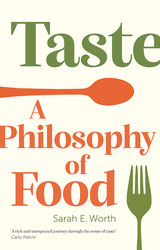
When we eat, we eat the world: taking something from outside and making it part of us. But what does it taste of? And can we develop our taste? In Taste, Sarah Worth argues that taste is a sense that needs educating, for the real pleasures of eating only come with an understanding of what one really likes. From taste as an abstract concept to real examples of food, she explores how we can learn about and develop our sense of taste through themes ranging from pleasure, authenticity, and food fraud, to visual images, recipes, and food writing.

USA traces a history that spans from early skyscrapers and suburbs in the aftermath of the American Civil War up to the museums, schools and ‘green architecture’ of today. Wright takes account of diverse interests that affected design, ranging from politicians and developers to ambitious immigrants and middle-class citizens. Famous and lesser-known buildings across America come together--model dwellings for German workers in rural Massachusetts, New York’s Rockefeller Center, Cincinnati’s Carew Tower, Frank Lloyd Wright’s Taliesin West in the Arizona desert, the University of Miami campus, the Texas Instruments Semiconductor Plant, and the Corning Museum of Glass, among others--to show an extraordinary range of innovation.
Ultimately, Wright reframes the history of American architecture as one of constantly evolving and volatile sensibilities, engaged with commerce, attuned to new media, exploring multiple concepts of freedom. The chapters are organized to show how changes in work life, home life and public life affected architecture--and vice versa. This book provides essential background for contemporary debates about affordable and luxury housing, avant-garde experiments, local identities, inspiring infrastructure and sustainable design.
A clear, concise and richly illustrated account of modern American architecture, this timely book will be essential for all those who wonder about the remarkable legacy of American modernity in its most potent cultural expression.
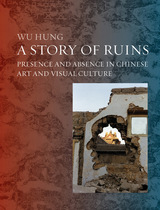
Wu Hung leads us through an array of traditional and contemporary visual materials, including painting, architecture, photography, prints, and cinema. A Story of Ruins shows how ruins are integral to traditional Chinese culture in both architecture and pictorial forms. It traces the changes in their representation over time, from indigenous methods of recording damage and decay in ancient China, to realistic images of architectural ruins in the nineteenth and twentieth centuries, to the strong interest in urban ruins in contemporary China, as shown in the many artworks that depict demolished houses and decaying industrial sites. The result is an original interpretation of the development of Chinese art, as well as a unique contribution to global art history.

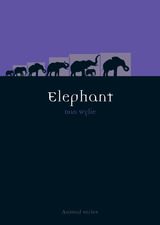
The image of the elephant can be found throughout world cultures as a symbol of intelligence, strength, and loyalty. Wylie draws on a rich array of examples to document that symbolic power, ranging from symbols of the Hindu god of wisdom, Ganesh, to the beloved children’s works Dumbo and Babar the Elephant.
Turning to the elephant’s biological history, Wylie describes the three remaining species—the African Bush Elephant, African Forest Elephant, and the Asian Elephant—and the controversial efforts for elephant conservation. With ivory poaching and human encroachment into the animal’s natural habitats, Wylie argues that we face a uniquely poignant conservation crisis in which elephants and humans both unsustainably consume limited natural resources.
A compelling new entry in the Animal series, Elephant will be necessary for every animal lover’s bookshelf.


Best known for his deeply controversial 1955 novel, Lolita, Vladimir Nabokov (1899-1977) is celebrated as one of the most distinctive literary stylists of the twentieth century. In Vladimir Nabokov, Barbara Wyllie presents a comprehensive account of the life and works of the writer, from his childhood and earliest stories in pre-revolutionary Russia, to The Original of Laura—a novel written almost entirely on index cards published for the first time in 2009, perhaps against Nabokov’s wishes.
This literary biography investigates the author’s poetry and prose, in both Russian and English, and examines the relationship between Nabokov’s extraordinary erudition and the themes that recur throughout his works. His expertise as a specialist in butterflies complemented his wide knowledge of Russian and Western European culture, philosophy, and history, and informed the themes of transformation and transcendence that dominate his work. Wyllie traces his lifelong preoccupations with time, memory, and mortality across both his Russian and English works, and she illuminates his distinctive through detailed analysis of his major novels. Wyllie assesses his poetry and prose style alongside Nabokov’s own autobiography, letters, and critical writings—as well as the only recently-published The Original of Laura—in order to create a complete and updated picture of the writer in the context of his works.
Vladimir Nabokov presents a fascinating portrait of one of the twentieth century’s most eclectic, prolific, and controversial authors. It is an essential read for fans of Nabokov and scholars of twentieth century English and Russian literature.
READERS
Browse our collection.
PUBLISHERS
See BiblioVault's publisher services.
STUDENT SERVICES
Files for college accessibility offices.
UChicago Accessibility Resources
home | accessibility | search | about | contact us
BiblioVault ® 2001 - 2024
The University of Chicago Press









